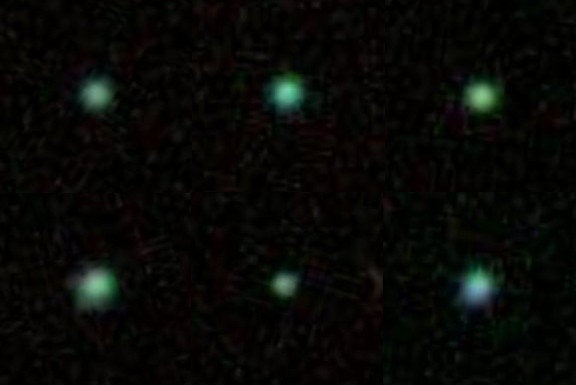
Astronomers still don't know much about how the universe developed during its infancy, but tiny galaxies known as "Green Peas" may hold big clues.
What's so special about these rare green-glowing galaxies? A new study suggests they're emitting ionizing radiation, similar to how radiation is believed to have been emitted in the early universe.
"They are compact and forming stars at extremely high rates," Dr. Sally Oey, associate professor of astronomy at the University of Michigan in Ann Arbor, told The Huffington Post in an email. "Their chemical composition, with few heavy elements, is more similar to the early galaxies than for example our own Milky Way galaxy."
The study, by Oey and doctoral student Anne Jaskot, sheds light on the process of reionization -- during which, as the first stars were forming the first galaxies, radiation poured out of these young galaxies and escaped into space. As a result, most of the universe became “re-ionized.”
"We think this is what happened but when we looked at galaxies nearby, the high-energy radiation doesn't appear to make it out," Jaskot said in a written statement released by the university. "There's been a push to find some galaxies that show signs of radiation escaping."
So, are there modern-day examples of this phenomenon? This is where Green Pea galaxies come in.
The galaxies were first discovered by the public via crowd-sourcing in 2007. But now Jaskot and Oey have focused their attention on six star-forming Green Pea galaxies that are between one billion and five billion light-years away.
The researchers found that the galaxies essentially produced more radiation than could be detected, which suggests that some of the radiation must have escaped. Sound familiar?
"The major takeaway is that high-energy light may be escaping the Green Peas, just as it may have escaped from the first galaxies," Jaskot told The Huffington Post in an email. "So far, only a few galaxies are known to have this escaping radiation and even fewer are close enough for us to study in detail."
Jaskot and Oey's research was published in the Astrophysical Journal.

